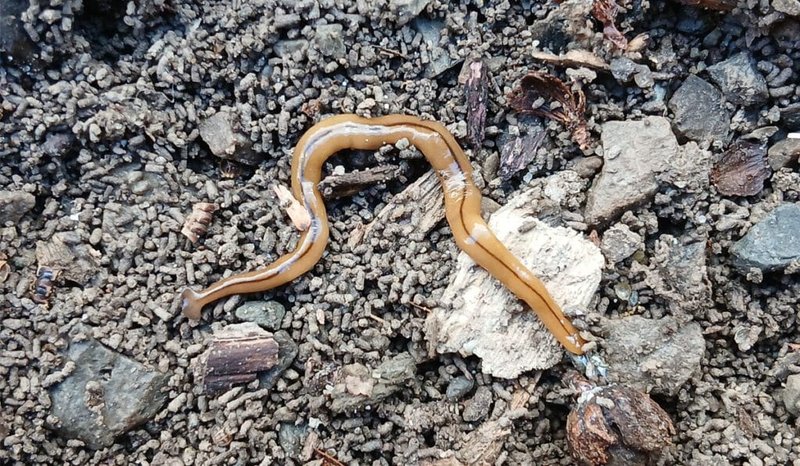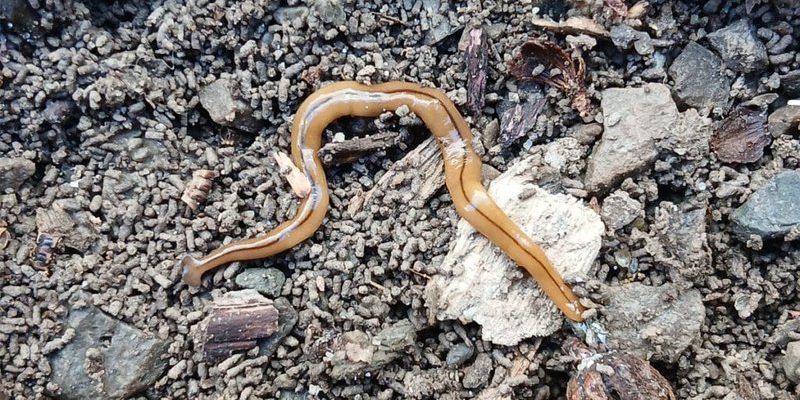
Imagine you’re at a bustling party. There are guests who know everyone and blend in well, while others stand out like a sore thumb. That’s similar to the way native and invasive hammerhead worms interact with their environments. Native species fit right in, playing their part in the local ecosystem. Invasive species, on the other hand, can disrupt the balance, much like an uninvited guest who causes chaos at a gathering. Let’s dive deeper into the world of hammerhead worms and see how these two types stack up against each other.
What Are Hammerhead Worms?
Hammerhead worms belong to the family Geoplanidae, characterized by their flattened bodies and distinct, hammer-like heads. These worms can be found in various colors—often brown or gray—with some even sporting vibrant hues. They primarily reside in moist environments like leaf litter, soil, and under stones or logs, where they hunt for food to enjoy.
These fascinating creatures are predatory, which is a bit unusual for worms. Instead of relying solely on decaying matter, hammerhead worms feast on smaller invertebrates like earthworms and slugs. That said, they can be beneficial for controlling pest populations in gardens, depending on whether they are native or invasive.
So, what’s the difference between native and invasive species? Well, native hammerhead worms have existed in a specific region for a long time and have evolved alongside local plants and animals. Invasive species, however, are newcomers that disrupt existing ecosystems thanks to their aggressiveness and adaptability.
Native Hammerhead Worms: The Local Heroes
Native hammerhead worms are like the familiar faces in your community. They have developed alongside local flora and fauna, contributing to the balance of their ecosystems. These species play essential roles, helping to break down organic materials and returning nutrients to the soil, which benefits plants and animals alike.
One example is the Geoplana marginata, which is commonly found in certain parts of North America. These worms thrive in moist, shaded habitats and are significant in maintaining soil health. Their hunting habits help keep other populations in check, demonstrating a delicate balance in nature that ensures the ecosystem’s health.
Here’s the thing: native hammerhead worms usually have natural predators that help keep their populations stable. This natural oversight is crucial because it prevents any one species from becoming too dominant and disrupting the overall ecosystem. As a result, native species contribute positively to their surroundings and help maintain biodiversity.
Invasive Hammerhead Worms: The Trouble Makers
Now, let’s talk about invasive hammerhead worms, which can be a bit more problematic. These species often come from distant lands, sometimes hitching a ride on plants, soil, or even through human activities. One notorious example is the Bipalium kewense, a species that has spread across many parts of the world due to its adaptability.
Invasive hammerhead worms can cause significant issues in their new homes. Unlike their native counterparts, they tend to reproduce rapidly and have no natural predators in their new ecosystems. This can lead to a dramatic decrease in local earthworm populations, essential for soil health, and therefore disrupt the entire food web of the area.
Imagine hosting a party where an uninvited guest takes over. They push aside your friends and start hogging all the snacks, making it hard for everyone else to enjoy themselves. Invasive hammerhead worms operate in much the same way, monopolizing resources and pushing out native species.
Identifying Native vs. Invasive Hammerhead Worms
You might be curious about how to tell these two types of hammerhead worms apart. While they share some similar features, a closer look reveals key differences.
Here are some tips for identification:
- Color: Native hammerhead worms are typically more subdued in color, blending in with their environment.
- Size: Invasive species like Bipalium kewense can grow larger—sometimes over a foot long—while many native species stay smaller.
- Head Shape: The hammer-shaped head of invasive species tends to be broader and more pronounced compared to the native varieties.
If you’re trying to identify a hammerhead worm in your garden or local area, these characteristics can help you determine if it’s a beneficial native or a potentially harmful invader.
The Impact of Invasive Hammerhead Worms on Ecosystems
Invasive hammerhead worms can significantly impact ecosystems wherever they take hold. Because they feast on earthworms—those workhorses of healthy soil—their presence can lead to a decline in earthworm populations. This, in turn, affects soil aeration, nutrient cycling, and plant health.
Also, the absence of native earthworms can upset the entire food chain. Birds and small mammals that rely on these worms for food may struggle to find enough sustenance, leading to declines in their populations. It’s like pulling a thread from a tapestry; once you start, the whole piece begins to unravel.
Given these impacts, it’s crucial to be aware of the presence of invasive hammerhead worms in your area. If you’re a gardener or someone who loves the outdoors, keeping tabs on your local wildlife can help promote healthy ecosystems.
What Can You Do About Invasive Hammerhead Worms?
If you discover invasive hammerhead worms in your garden or local area, there are steps you can take to address the situation.
First, avoid moving plants or soil that may contain these worms to other locations, as this can spread them further. Next, you can manually remove them when you find them. Just remember to wear gloves—some species can produce mucus that may irritate your skin.
If you’re dealing with a significant infestation, you may want to consult local wildlife or pest control professionals. They can provide guidance on properly managing the situation without disrupting the local ecosystem even further.
Taking action can help preserve native species and maintain the delicate balance of your local environment.
In summary, understanding the difference between native and invasive hammerhead worm species is crucial for maintaining healthy ecosystems. While native species play a beneficial role, invasive ones can disrupt the balance and harm local wildlife. By learning to identify these worms, you can help promote biodiversity in your area.
Remember, nature’s balance is delicate, and every species plays a role—whether they’re the familiar faces or the uninvited guests at the party. So, the next time you encounter a hammerhead worm, take a moment to appreciate its role in the ecosystem, while also being mindful of its potential impact. Every little effort counts toward fostering vibrant, balanced environments we can all enjoy!

